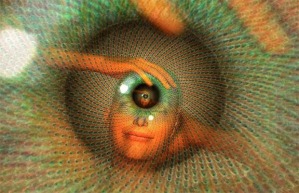By: Scott Thill
Located in nearly the direct center of the brain, the tiny pinecone-shaped pineal gland, which habitually secretes the wondrous neurohormone melatonin while we sleep at night, was once thought to be a vestigial leftover from a lower evolutionary state.
Indeed, according to recent research, we could be increasing our chances of contracting chronic illnesses like cancer by unnecessarily bathing its evenings in artificial light, working night shifts or staying up too late. By disrupting the pineal gland and melatonin’s chronobiological connection to Earth’s rotational 24-hour light and dark cycle, known as its circadian rhythm, we’re possibly opening the doors not to perception, but to disease and disorder. A recently published study from Vanderbilt University has found associations between circadian disruption and heart disease, diabetes and obesity.
By hacking what pinealophiles call our mind’s third eye with an always-on technoculture transmitting globally at light-speed, we may have disadvantaged our genetic ability to ward off all manner of complicated nightmares. No wonderthe pineal gland is a pop-culture staple for sci-fi, fantasy and horror fandom, as well as a mass attractor of mystics and mentalists. Its powers to divide and merge our light and dark lives only seems to grow the more we take it seriously.
“We still lack a complete understanding of the pineal gland,” University of Michigan professor of physiology andneurology Jimo Borjigin, a pioneer in medical visualization of the pineal gland’s melatonin secretion, told me. “Numerous molecules are found in the pineal, many of which are uniquely found at night, and we do not have a good idea of what their functions are. The only function that is established beyond doubt is the melatonin synthesis and secretion at night, which is controlled by the central clock in the suprachiasmatic nucleus and modulated by light. All else is speculative.”
Discerning between the science and speculation of the pineal gland hasn’t been easy since long before Rene Descartes called it the “principal seat of the soul” after studying it at length nearly four centuries ago. (Although “no evidence exists to support this,” clarified Borjigin.) So here’s a handy shortlist of things you should know about the pineal gland.
1. Third Eyes and Theosophistry
The current scientific understanding is that the pineal gland probably started out as an eye, and it receives signals from light and our retinas. Whether it was our only eye which shrunk into the brain once its perceptive tasks were taken care of by our two newer eyes, or whether it was a third eye with a spiritual and physical connection to previous spiritual and evolutionary states, or both, has galvanized science and speculation for centuries.
Earth’s ancient cultural histories are filled with folklore featuring both one-eyed and three-eyed beings of great power, from Shiva and Cyclops to that amiable fellow in The Twilight Zone’s classic episode, ” Will the Real Martian Please Stand Up?” and beyond. ( From Beyond even: See below.) Associations can be found in Hinduism, whose seventh primary chakra Sahasara is a multilayered lotus that looks like the pineal gland’s pinecone, and whose primary function is to perceive universal oneness, scientifically and spiritually speaking. Theosophists, who have been studying what they perceive as hidden knowledge since the Greeks and Romans ruled philosophical and scientific inquiry, have more recently claimed that the pineal gland is the spiritual engine of our evolution into ” embryo gods, beings of consciousness and matter.”
That description seems apt, given the astronomical power we have achieved in a few million yeas of evolution. While Homo sapiens’ third eyes likely transformed into pineal glands along the way, today we can still find animals with photoreceptive third eyes, now called parietal eyes, like New Zealand’s endangered tuatara. Fossils from other ancient creatures feature similar sockets in their skulls, making our pineal gland a candidate for an ex-eye.


Very interesting insights!
LikeLike